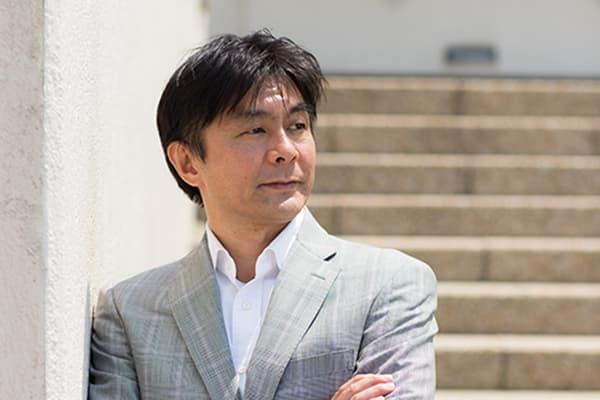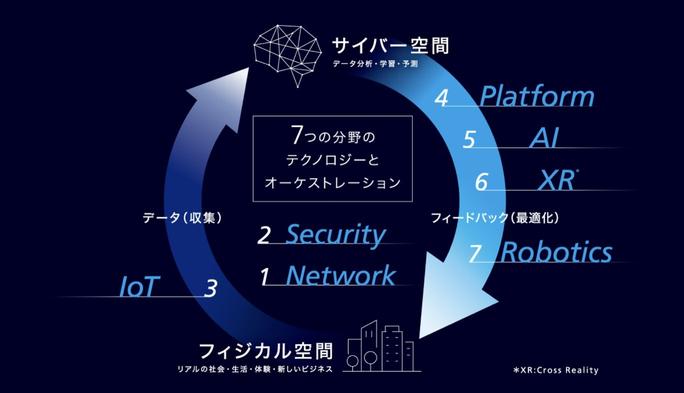Kei Hirata's column "The story of the macro economy that loses money if you don't know"-Insurance market TIMES
In Japan, where low interest rates have continued for a long time, "high interest rate currencies" sometimes gain popularity. Today, the Turkish lira, Mexican peso, South African rand, and the Australian and New Zealand dollars used to be popular items. However, is such a high interest rate currency really suitable as an investment target? This time, I would like to introduce the points to be aware of when choosing a high-interest currency as an investment target.
If you choose a high interest rate currency as an investment target,
(1) Why do interest rates differ from country to country? (2) Why are interest rates high in some countries? (3) What are the points to note about high interest rate currencies?
The above three points are the minimum points to keep in mind.
If you recommend a high-interest currency, shouldn't you share this information with them? Originally, I have to tell you the cautions and disadvantages of high interest rate currency. It is no exaggeration to say that the act of telling consumers only about the merits of a product and recommending that they purchase it is a fraud. Unfortunately, in the Japanese financial industry, such fraudulent sales are still going on. The Financial Services Agency also sees this as a serious problem. As an expert with the Financial Services Agency, I would like to make a conscious effort to address this issue from the perspective of consumer protection.
(1) Why do interest rates differ from country to country?
It is the central bank of each country that decides the origin of the interest rate of each country. In Japan, it is the Bank of Japan, and in the United States, it is the FRB (Federal Reserve Bank). The interest rate set by the central bank is called the policy interest rate. Interest rates vary from country to country as the central bank raises or lowers the policy interest rate according to the economic conditions of the country.
Supplement: All interest rates (deposit interest rates, mortgage loans, etc.) of the country are determined based on the policy interest rate.
(2) Why are interest rates high in some countries?
Taking vegetables as an example, prices go down in years of good harvests, and go up in years of bad harvests. If the amount of vegetables in the market increases, the price will decrease, and if the amount decreases, the price will increase. The same thing happens with the money in circulation. When the amount of money in circulation increases, the price (value) of money decreases, and when the amount decreases, the price (value) of money increases. The former is called inflation and the latter is called deflation.
Like the former (inflation), when the amount of money in circulation increases too much, the central bank tries to reduce it. That's why we raise interest rates. This is because if interest rates are raised, consumers will be more motivated to deposit money and receive interest, rather than to spend money. In addition, companies that want to borrow money will be less willing to borrow if interest rates rise. Thus, by raising interest rates, the amount of money in circulation can be reduced. In the case of the latter (deflation), the central bank does the opposite of the former (inflation). In other words, lower interest rates.
(3) What are the points to note about high interest rate currencies?
In the previous section, we learned that ``the central bank raises interest rates when there is a large amount of money in circulation''. It should be noted here that the amount of money in circulation means that the price (value) of money is declining. In other words, the money (currency) of countries with high interest rates is depreciating. In other words, recommending a high interest rate currency means that you are recommending something whose value is steadily declining (in this case, a high interest rate currency). Do you want to buy something whose value decreases as you hold it?
Disadvantages of High Interest Rate Currencies
From now on, let's talk about the disadvantages of high interest rate currencies that financial institutions on the selling side don't often mention. In conclusion, high interest rate currencies tend to be cheaper in the long run. Financial institutions often recommend that you aim for a return with foreign exchange gains in the short term, and a swap (interest rate) in the long term. This also creates an illusion that if you hold a high interest rate currency for a long time, you will make a profit only for the interest rate. Unfortunately, the truth is otherwise.
Take the hamburger for example. Suppose a hamburger is sold for 100 yen in Japan and 1 dollar in the United States. There is a concept called the law of one price, which states that the price of the same product is the same even if the country is different. According to this, 100 yen and 1 dollar are equivalent, so 1 dollar = 100 yen.
Suppose that inflation occurs in the United States after this. The amount of money (dollars) circulating in the United States has increased, and the value of money (dollars) has decreased. In this case, the Fed will raise interest rates to try to reduce the amount of money in circulation. In other words, high interest rates. As an extreme example, let's say that 100% inflation occurred in the United States, and the next year a hamburger was $ 2 in the United States. On the other hand, suppose that there is no inflation in Japan and it is 0%. According to the law of one price,
1 dollar x (1 + 100%) = 100 yen x (1 + 0%) ⇒ 2 dollars = 100 yen ⇒ 1 dollar = 50 yen
2 dollars and 100 yen are equivalent. In other words, it will be in equilibrium at 1 dollar = 50 yen.
If the exchange rate goes from 100 yen to 100 yen to 50 yen to 1 dollar, the US dollar will depreciate and the Japanese yen will appreciate. Professionally speaking, the dollar is weak and the yen is strong. Losses and profits generated by such exchange rate changes are called foreign exchange gains and losses.
Countries with inflation tend to have high interest rates. As a calculation formula,
Nominal interest rate = real interest rate + inflation rate (inflation rate)

. When we talk about high interest rates, we generally mean high nominal interest rates.
Like the hamburger example above, even if you hold for a long time to get the benefits of high interest rates in a country where inflation is occurring (the United States in this example), the interest rate difference tends to be offset by foreign exchange gains and losses. there is. So it's not easy to get a return. In other words, it is not possible to say, "If you hold a high interest rate currency for a long period of time, you will make a profit only for the interest rate."
In addition,
[There is almost no point in choosing a high-interest currency! ]
Let me introduce you.
Figure 1 was created by the author from the latest edition (2019 edition) of the Triennial Survey (a report published once every three years) by the BIS (Bank for International Settlements). . According to this, the top 3 currencies traded in the world are (1) US dollar (44.15%), (2) Euro (16.15%), and (3) Japanese Yen (8.4%). This is also the ranking of the creditworthiness of each country's currency. In other words, the creditworthiness of the US dollar is overwhelming. That's why it has been able to continue to be the only key currency after World War II. Since the euro is the currency used by several European countries, the Japanese yen is the second most creditworthy currency after the US dollar.
Figure 1 Transaction volume by currency
Source: Created by the author based on data from BIS (Bank for International Settlements) "Triennial Survey (report published once every three years) (2019 version)" , a portion of their assets, and some hold a majority in US dollars. because,(1) Highest creditworthiness in the world (2) High liquidity (transactions such as cash conversion and trading can be done at any time) (3) Convenience overseas (business trips/travel destinations) (4) The growth potential of the US economy (it is the only developed country that is predicted to continue to grow in 30 years) (5) Abundant information
.
There are so many reasons to choose the US dollar when diversifying your assets. People in South America, who experienced hyperinflation that turned their assets into pieces of paper in a day, and Southeast Asians, who experienced currency crises, do not have much confidence in their own currencies. Uncertainty about when their assets will lose their value again, they choose the US dollar, which has the highest credit rating in the world, as their asset without hesitation.
On the other hand, what about Japan? Popular currencies include the Turkish Lira, the Mexican Peso, and the South African Rand, simply because of their high interest rates. Are these currencies safe in terms of (1) creditworthiness, (2) liquidity, (3) convenience, (4) growth potential, and (5) information? Financial institution salespeople themselves routinely sell currencies of countries (Turkey, Mexico, South Africa) that they have never been to or know much about. is there.
There is a reason why we Japanese, who own the Japanese yen, which has the third highest creditworthiness in the world, choose the second-ranked euro and the first-ranked US dollar when diversifying their currencies. However, there is no reason to own a currency with a lower credit rating than the Japanese yen. It's like having a first class ticket and wanting to be transferred to economy class.
As for (2) fluidity, it may be difficult to understand, so I will touch on it a little. Pairs against the US dollar are called dollar straights, and others are called cross currencies. Among the cross currencies, the pair involving the yen is called the cross yen. Figure 2 shows the percentage of currency pairs traded in the world. What we can see from this is that the dollar straights, the euro/dollar and the dollar/yen, account for a large percentage.
Figure 2 Trading volume by currency pair
Source: Created by the author based on data from BIS (Bank for International Settlements) "Triennial Survey (report published once every three years) (2019 edition)"World foreign exchange market So, the euro/dollar and dollar/yen are traded on a daily and continuous basis. Other currency pairs are traded only when necessary, calculated from the dollar straight rate.
For example, if you need to trade AUD/JPY, the dealer in charge of cross currencies will calculate the AUD/JPY rate from the dollar straight rates of AUD/USD and USD/JPY. To do. Japanese megabanks have fund exchange departments that handle currencies (foreign exchange), and foreign exchange dealers are enrolled. The ratio of currency pairs in charge is 85% for dollar/yen, 10% for euro/dollar, and about 5% for cross currency. That's why there are so few cross-currency trades compared to euro/dollar and dollar/yen. In other words, it lacks liquidity.
Moreover, cross currencies are not usually traded, so all currency pairs move almost in tandem unless there are special circumstances such as a coup d'état or a change in government. Figure 3 compares the euro/yen, Australian dollar/yen, Mexican peso/yen, and South African rand/yen, which are cross-yen, over the long term of over 10 years. It turns out that they are almost related. It is better to think that cross currency will not have much diversification effect.
Figure 3 Cross circle comparison (October 2010 to March 2021)
Source: Created by the author based on Bank of Japan statistical dataFinancial institutions say, "Now is the chance for a high-interest currency!" There are times when we launch a large-scale campaign such as That is until the exchange rate diverges from the law of one price and the original theoretical value is corrected. During this period, you can enjoy the benefits of high interest rates, and you can also earn foreign exchange gains. However, after that, it is no exaggeration to say that it is almost certain that it will be involved in a correction phase to the theoretical value of a major crash.
Historically, this has been repeated. Financial institutions, of course, know that history. Despite this, when the high-interest rate currency rises (for example, the Turkish lira appreciates and the yen weakens), it launches a large-scale campaign. However, high-interest currencies also have some caveats and disadvantages. Beware of financial institutions that only tell you the benefits of high-interest currencies! Don't let yourself fall into the high interest rate currency trap.
⇒Click here if you want to read more about Kei Hirata's column "The story of the macro economy that loses if you don't know"
⇒Top
PROFILE
Kei Hirata
Financial asset total solutioner, businessman
Born in 1968. In 1995, he was headhunted by B.C.M.G. In 2000, he worked on a number of sophisticated financial derivative products as a currency option dealer at the current Bank of Tokyo-Mitsubishi UFJ. In 2005, after establishing Lavoc Co., Ltd. and becoming the representative director, he also served as a lecturer at Kansai University Graduate School. Author of "Introduction to FX Trading" (Nikkei Bunko) and others.
*The content of this article is the opinion of an independent author who has no direct relationship with our company. * Please note that the information posted may differ from the latest products, laws, tax systems, etc.






![lifehacker lifehacker LifeHacker LifeHacker A carabiner that is convenient for cutting packaging at the entrance. Excellent sharpness for medical blades! [Today's life hack tool] lifehacker lifehacker LifeHacker LifeHacker A carabiner that is convenient for cutting packaging at the entrance. Excellent sharpness for medical blades! [Today's life hack tool]](http://website-google-hk.oss-cn-hongkong.aliyuncs.com/drawing/223/2022-3-2/28016.jpeg)

![lifehacker lifehacker LifeHacker LifeHacker [2021] 7 Recommended Dishwashers | Introducing High Cospa & Compact Products lifehacker lifehacker LifeHacker LifeHacker [2021] 7 Recommended Dishwashers | Introducing High Cospa & Compact Products](http://website-google-hk.oss-cn-hongkong.aliyuncs.com/drawing/223/2022-3-2/30293.jpeg)
Masaki Aiba's "VS Damashii" member theme song project started!Shori Sato & Yuta Kishi laugh at orders in English
We take the place of ... Children who directly appealed to His Majesty the Emperor for the release of his father in the Nara period (December 11, 2021) --Excite News
The 26-year-old who doesn't know love met ... "Literature Virgin-The Story of Late Blooming Love-" (November 22, 2021) --Excite News
[Interview] YAASUU, local love and new ground "French and dialect collaborated" in the major works of the singers from Miyakojima.